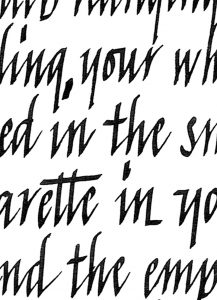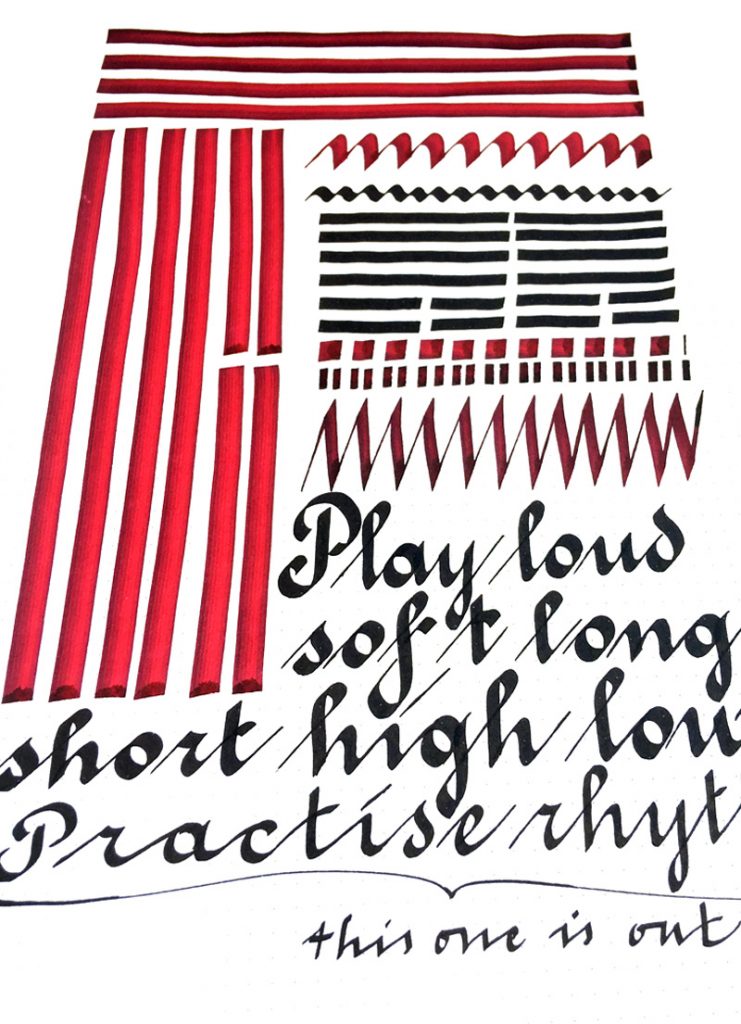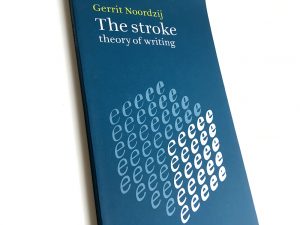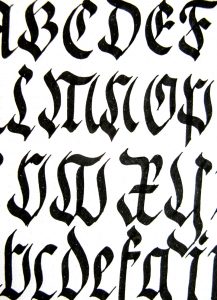
Gerardus ‘The Rebel’ Mercator
I learned writing italic through the manual of Mercator, which, still today, serves as a good base to teach my students.

How I discovered the relationship between music and penmanship.
Before I went to art academy, I studied classical saxophone at the Royal Conservatory in The Hague, The Netherlands. I didn’t finish those studies, because —in the end— my passion for letters turned out to be bigger. However, the resemblance between music and penmanship is remarkable.
Pen = Instrument
My pen requires practice every day, just as my saxophone did. I develop technical skills by training specific muscles to remember their movement. Every day I would start with practicing my scales, for hours. Now I start the day with drawing lines: long ones, short ones, curvy ones, straight ones. Long lines are like long notes, short ones are like staccato, curvy ones are like vibrato. Loud notes are bold lines written with a big pen, soft notes with a small pen.
Repertoire = Scripts
You can play Bach, you can play 4’33” by Cage. There are easy pieces to play, there are complicated pieces to perform. Some are part of the solid base you should establish, some are part of your specific fascination.
This is such an extremely delicate balance, to judge your work with the wabi-sabi attitude.
Music = Flow
This is the most important one. Once I was listening to a recording of myself. It was recorded in a professional studio, so beforehand I made sure that I studied every detail of the piece as thoroughly as possible, to be sure of any outcome. In short: there shouldn’t be any surprise. And there wasn’t. But there also wasn’t any music. I was shocked. Was this why I studied so hard? To be a perfect player? To forget about the music? Never.
Notes in itself are not interesting. They become interesting when the musician interprets them. By timing, sound, silence…
Yes, practice makes perfect, but perfect makes boredom.
Share this post

I learned writing italic through the manual of Mercator, which, still today, serves as a good base to teach my students.

A letter is not any different from a stain. It is making a shape and a counter shape.

Honestly, I always feel a bit embarrassed to call myself a calligrapher because of its frumpy identity.